This is the sixth in a series of posts about Children’s Book Week. Click here to read the first, second, third, fourth, and fifth posts.
—
Although I enjoyed reading the book “Spectacles” by Ellen Raskin long before I needed glasses, this is a delightful book for any child who has glasses, needs glasses, or hopes they never need glasses. In other words — anyone.
“Spectacles” is about a girl named Iris Fogel who had trouble seeing clearly.
One day a fire-breathing dragon knocked on her door.
Scary, huh?
Turns out the fire-breathing dragon was actually Great-aunt Fanny!
See the fire-breathing dragon?
Iris was sure she saw a horse in her house…
… but it was actually her baby-sitter.
After many instances of being confused about what she saw, Iris’ mother took her to a blue elephant.
Er, an eye doctor.
The blue elephant / eye doctor determined that Iris needed glasses. She resisted, but then realized she got to choose between glasses that made her look younger or older, sweeter or smarter, like a scholar or a movie star, adorable or intelligent. (This picture of Iris wearing six different pairs of glasses was always my favorite page.)
So Iris’ vision problems were solved… until she took off her glasses and thought her family Christmas celebration was a red rhinoceros with a tulip in its ear.
The book is from 1968, so the illustrations seem a bit dated, but in a charming sort of way. And don’t you just love that the girl with vision problems is named IRIS? Me too.
























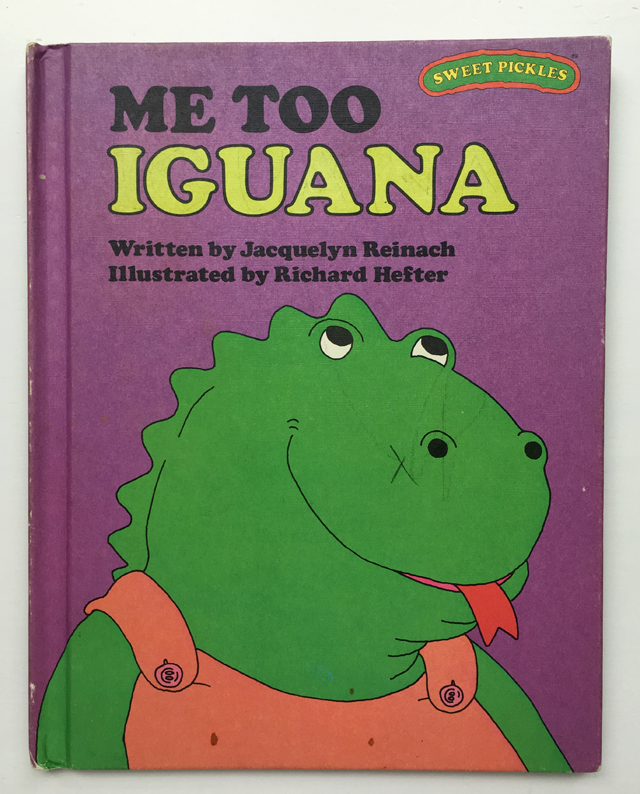
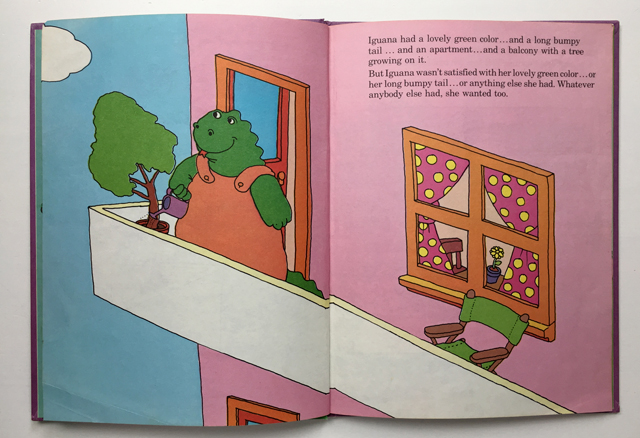
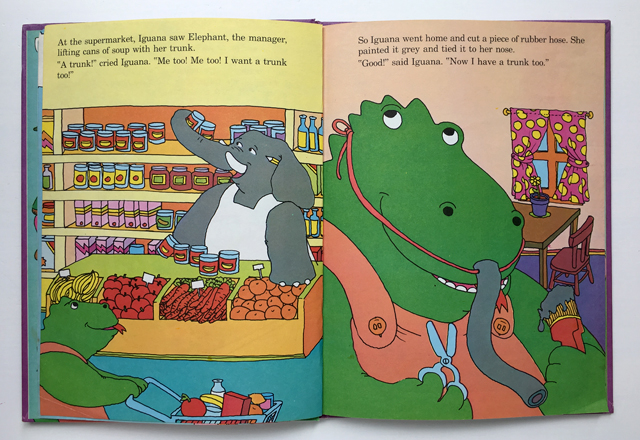
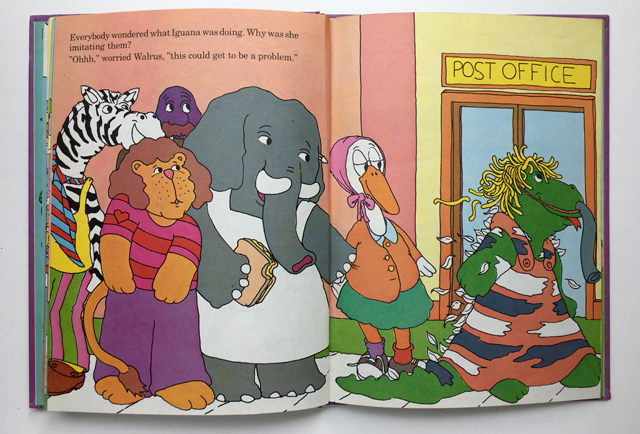
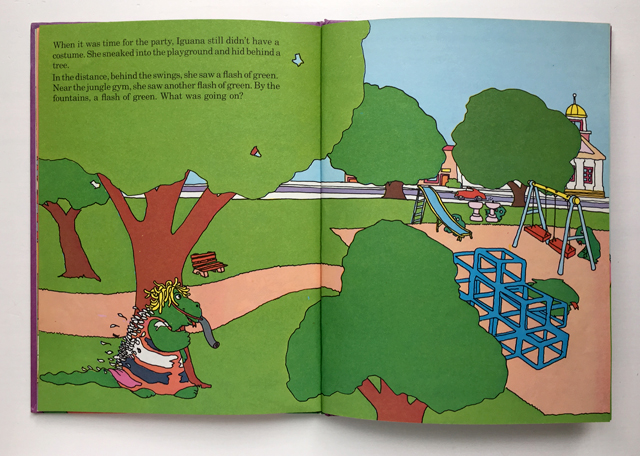
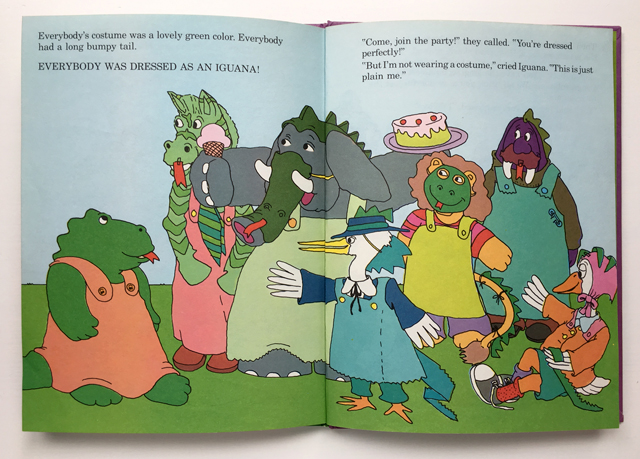


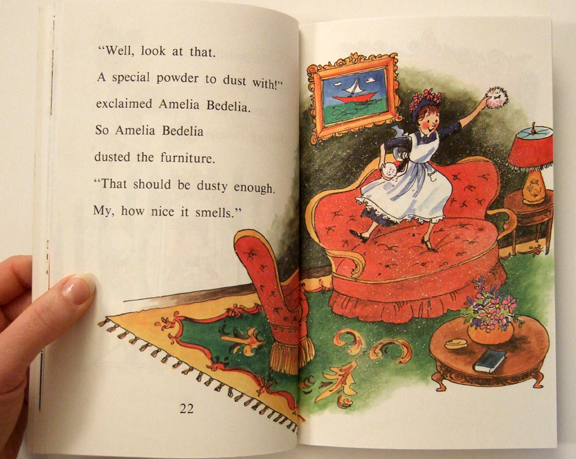










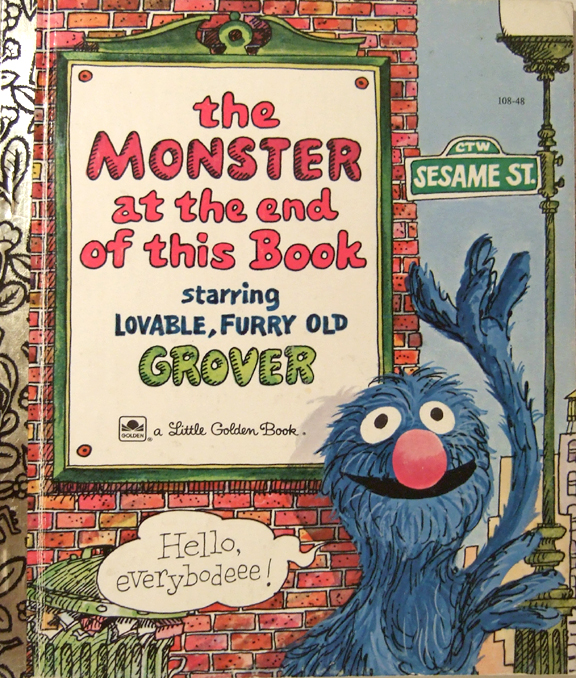



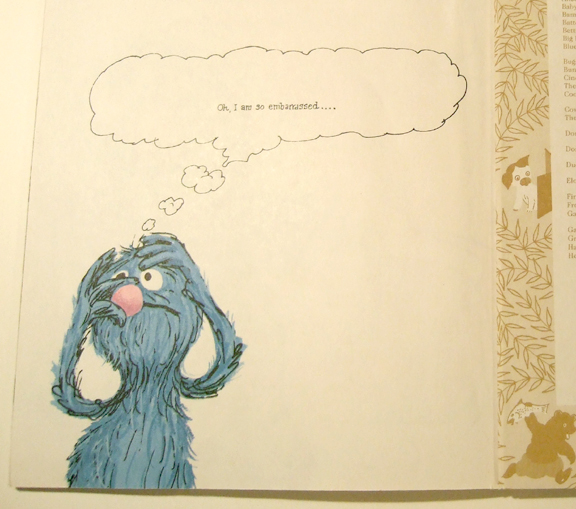

 Hi! I'm Rachel, and I'm so glad you're here. I make creative projects and intentional choices to create a life I love -- and I hope to inspire you to do the same!
Hi! I'm Rachel, and I'm so glad you're here. I make creative projects and intentional choices to create a life I love -- and I hope to inspire you to do the same! 
